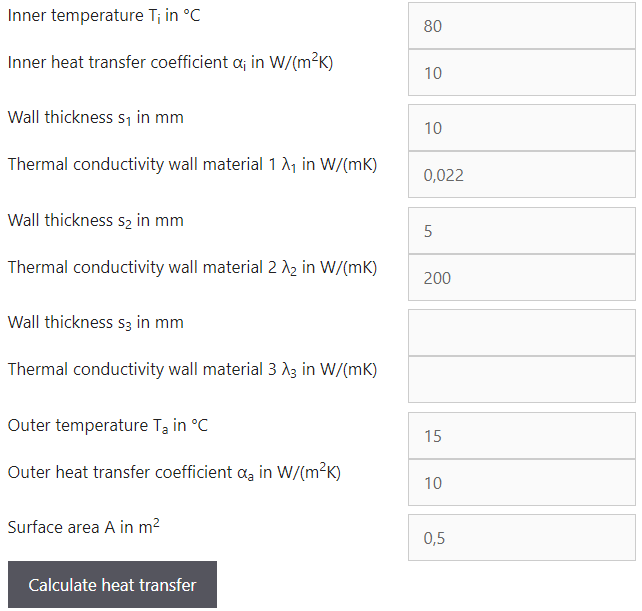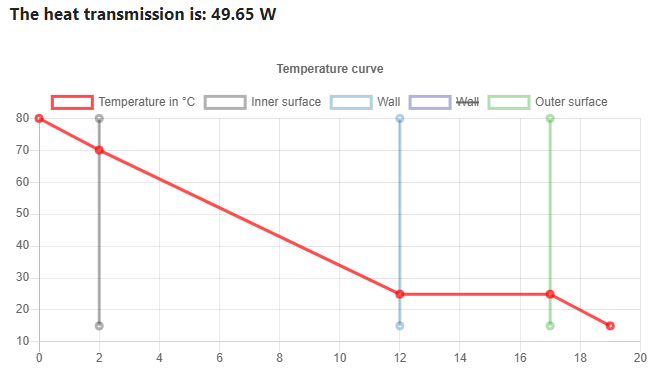With this online calculator, the heat transfer through a multi-layer wall with up to 3 layers can be calculated. In addition, the temperature profile in the individual wall layers is displayed in a diagram. Here is an overview of the various thermal conductivity values. Heat transfer coefficients are listed in a table at the bottom of this page.
Note: the layer thickness of the heat transfer from the fluid to the wall depends on the respective flow conditions; it is shown here only symbolically. Since the heat transfer at these points is calculated here on the basis of the heat transfer coefficient, the layer thickness is not relevant.
Heat transfer coefficients
| Natural convection in: | α in W/(m2K) |
| Gases | 3 ... 20 |
| Water | 100 ... 600 |
| Boiling water | 1000 ... 20000 |
| Forced convection in: | |
| Gases | 10 ... 100 |
| Fluids | 50 ... 500 |
| Water | 500 ... 10000 |
| Condensing steam | 1000 ... 100000 |
Example calculation of heat transmission for a multilayer wall
A laboratory device should maintain an operating temperature of 80 °C inside. It has a housing wall made of aluminum with a wall thickness of 5 mm and a microporous insulation board with a thickness of 10 mm and a thermal conductivity of 0.022 W/(mK). How big does the heating power have to be for the device if its surface is 0.5 m2 and the ambient temperature is 15 °C?
The values can be entered directly into the calculation tool. Since there are only two walls, the fields for the third wall are left blank. The thermal conductivity value for aluminum is assumed to be 200 W/(mK); it is free convection.

After clicking on the "Calculate heat transfer" button, the heat flow and the temperature profile in the wall are displayed.

The required heating power for the device is about 50 Watt.

